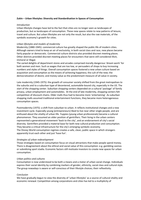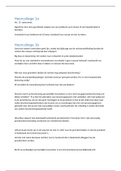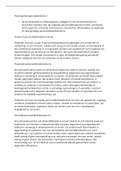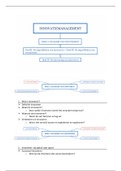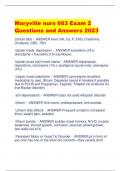Introduction
Urban lifestyle changes have led to the fact that cities are no longer seen as landscapes of
production, but as landscapes of consumption. These new spaces relate to new patterns of leisure,
travel and culture. But urban lifestyles are not only the result, but also the raw materials, of the
symbolic economy’s growth for cities.
Urban lifestyles and models of modernity
Modernity (1880-1945): commercial culture has greatly shaped the public life of modern cities.
Although owners tried to keep an air of exclusivity, in both social class and race, new places became
fairly popular or democratic. Commercial culture districts also provided discreet meeting places.
Other districts provided discreet meeting places for encounters that were still considered illicit,
immoral or illegal.
The varied delights of department stores and arcades comprised morally dangerous ‘dream worls’ for
both women and men. Such as wages that are too low, or persuaders of shops to buy increasing
numbers and styles of things. Overall consumption spaces fostered a new urban culture based on
acquisition and consumption as the means of achieving happiness; the cult of the new; the
democratization of desire; and money value as the predominant measure of all value in society.
Late modernity (1945-1975): the growth of consumer society shifted from the great metropolises to
the suburbs and to a suburban type of decentered, automobile-bound city, especially in the US. The
start of the shopping center. Suburban shopping centers depended on a cultural ‘package’ of family
privacy, urban employment and automobiles. At the end of late modernity, shopping centers felt
competition of discount chains. Older malls thus had to become more ‘entertaining’. As suburban
shopping malls assumed traditional entertainment functions, they became more heterogeneous
consumption spaces.
Postmodernity (1975): a shift from suburban to urban. It reflects institutional changes and a new
investment cycle. Especially young (entrepreneurs) liked to live near other single people, and are
enthused about the vitality of urban life. Yuppies (young urban professionals) became a cultural
phenomenon. They assumed an older position of gentrifiers. Their living in the urban centers
represented a generational movement ‘back to the city’, and an endorsement of city’s social
diversity. Gentrifiers provided a material base for both new cultural production and consumption.
They became a critical infrastructure for the city’s emerging symbolic economy.
The Disney World consumption regimes creates a safe, clean, public space in which strangers
apparently trust each other and just ‘have fun’.
Strategies of urban redevelopment
Those strategies based on consumption focus on visual attractions that make people spend money.
There is disagreement about the ethical and social value of this consumption: e.g. gambling casinos
or subsidizing sport stadia. Economic factors still motivate investors to create new spaces for urban
consumption.
Urban politics and cultures
Consumption is now understood to be both a means and a motor of urban social change. Individuals
express their social identity by combining markers of gender, ethnicity, social class and cultural style.
The group nowadays is aware or self-conscious of their lifestyle choices; their reflexitivity.
Conclusion
We have gradually begun to view the diversity of ‘urban lifestyles’ as a source of cultural vitality and
economic renewal. Competition among corporations and cities has led to a multiplicity of

